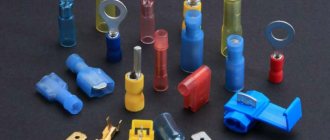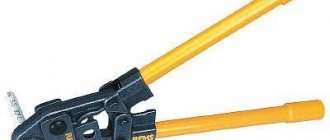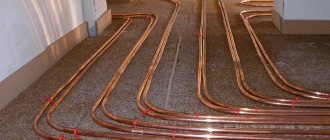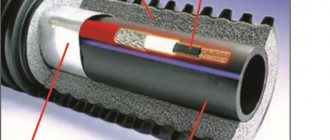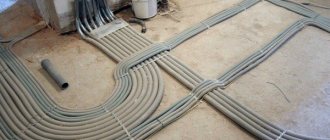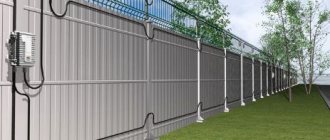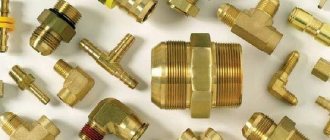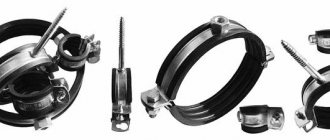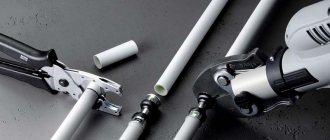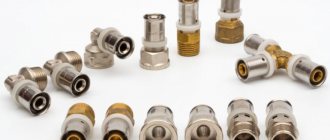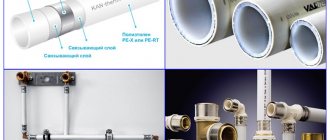Features of crimping pliers
The principle of operation of the tool is similar to the operation of pliers. The difference between crimping pliers for ferrules is the complex profile of the pressing jaws. Crimping pliers or crimpers have different sizes and shapes of the planting bed. Each type of tool is designed for crimping wires and cables with a certain cross-section and number of cores.
Tools for crimping wire lugs and cable cores allow you to quickly and efficiently make switching connections between power units. The crimping process for cable lugs is quite simple. A sleeve is placed on the bare end of the wire or stranded wire. She is led into the opening of the ticks. Using the force of the fingers, the hands squeeze the levers of the tool, and the crimper compresses the sleeve with the wire.
A tool that united professions and centuries
What can unite the work of a dentist or a jeweler and a blacksmith or, say, a sleeper? Of course, these are their working tools. Of course, they differ in their appearance and size, and they will be made of different materials, but nevertheless, most of them will belong to the same tool group - articulated pliers. The name is double, the meaning is the same, and the weapon itself consists of two, in most cases, identical halves.
These “twin” parts are connected using a hinge, hence the first part of the name. In these halves, in turn, a distinction is made between the working part and the handle, the relationship of which to each other can be different, depending on the scope of application and the tasks facing them. Their working parts, regardless of size, are usually called sponges - for this they owe some similarity to living beings: they also close and open. This is how the second part of the name appeared.
It is interesting that, having passed through the centuries of their existence, these instruments have not changed their essence, have not lost a single area of application, quite the opposite: the development of scientific and technical thought has led to the emergence of more and more new tasks for them. Perhaps the only thing that has changed is the appearance has become more presentable. And some areas of use, for example, medicine or complex electrical installations, require special manufacturing. And so, neither give nor take, pliers are a tool that has united different professions and entire centuries.
Main types of ticks
Ferrule crimper
Crimping pliers are divided into two types. The most common type is a design that works like pliers. That is, the sleeve is compressed on both sides. Other pliers are diaphragm crimpers.
Crimping pliers
Passatizhny
The tip is crimped in the same way as pliers grip a part. The working surface of the dies has cutouts into which the tip shank is threaded. This design is suitable for those fastenings that do not require special reliability.
To increase crimping force, hydraulic ferrule crimping tools were invented. Thanks to this improvement, the pliers became more efficient. The design uses cylinders with pistons filled with oil, which creates a large pressure of the matrices on the tip sleeve.
Pliers with removable dies
Important! Some crimpers are equipped with several types of removable matrices. The versatility of the tool eliminates the need for pliers for each conductor cross-sectional size.
Diaphragm pliers
The originality of the design of diaphragm crimpers lies in the comprehensive coverage of the tip shank. The principle of operation is similar to the movement of the aperture blades of photographic lenses. The only drawback of such devices is the impossibility of inserting pliers into the connection of the two ends of the wires.
Note! The diaphragm tool is used as a press for pin or flat metal tips. The all-round clamp is much more effective than the plier type for covering the end switches of wire products.
Diaphragm pliers
The best manufacturers
Using press jaws is convenient, the main thing is to choose the right tool. Be sure to take into account the tasks to be solved. Example - for stripping contacts, crimping connectors, and cutting wires, models with replaceable jaws are needed. In order to crimp tips of different materials, it is optimal to use a hydraulic tool.
This is what electric clamps look like in operation
The most popular tool manufacturers among buyers from Russia:
- I.E.K.;
- KWB;
- Intertool;
- S&R4;
- STANLEY;
- AsCo;
- PROLINE;
- E-next;
- Pro'sKit;
- STOCK.
You need to look at the price, design, and quality of the products.
Application area
Press tongs KVT
Pliers for crimping wire lugs of certain designs are used depending on the cross-sectional composition of the cable product. The main areas of use of crimpers can be represented by the following list:
- stranded wires and thin-walled lugs;
- stranded wires and thick-walled lugs;
- lugs and large-section electrical cable;
- sequential crimping of wires;
- crimping computer cables.
Stranded wires and thin-walled ferrules
Thin-walled lugs are used for small-section wires - from 0.5 to 3.5 mm2. The elements are marked NSHVI. The abbreviation stands for as follows:
- N – tip;
- Ш – pin;
- B – bushing;
- And - isolated.
NSHVI lugs are used for crimping stranded copper wires with subsequent insertion into sockets of various electronic devices. The crimper handles are compressed until the spring mechanism of the device is activated.
NShVI tips
Note! Multi-stage clamp matrices allow you to work simultaneously with wires with a cross-section in the range indicated above. This eliminates the need for a large number of hand crimping tools.
Press pliers create a strong and reliable compression of the tips. Without them, one would have to twist stranded cores or solder the terminals of switchgear devices. The use of pressed end switches completely eliminates problems associated with breakage of thin wires, wire breakage, and the risk of short circuit.
Stranded wires and thick-walled ferrules
Thick-walled shanks are used for crimping multi-core power cables. Their maximum cross-section reaches 16 mm2. Press pliers PK-16 are used only for multi-core wires. The tool can compress the sleeve so tightly that it can easily break a single core.
The cable crimping process occurs in several stages:
- At the end of the wire, mark the length of the sleeve.
- Using special nippers, remove the insulation from the marked area.
- Place a piece of heat-shrinkable tubing so that it does not touch the exposed wire.
- The cleaned end of the cable is inserted into the sleeve. The insertion of the wire should be tight, but without force.
- The tip is crimped using pliers.
- The protruding veins are bitten off.
- Use a hair dryer to heat the heat shrink tube until it tightly grips the cable.
Pliers PK-16-U
If the letter “U” is indicated in the marking of the tool, this means that the ratchet mechanism is located inside the handles, which creates a large force on the jaws of the crimper. The PK-16-U pliers compress more easily during cable crimping.
Large cross-section lugs and electrical cable
Crimping for large cross-section electrical cable lugs is done using a manual hydraulic press. Initially, the valve of the device is slightly open, and the rod slowly moves to its original position. At the beginning of the piston stroke, the valve opens completely, which ensures compression of the dies with great force.
Large cross-section cables are rarely found in indoor equipment. Hydraulic pliers are mainly used for installing lugs on high-voltage cables for fastening them in switchboards of industrial facilities. Hydraulic crimping pliers for dimensional lugs are also used for laying and switching power cables in power panels at the entrances of residential buildings, administrative buildings and civil buildings.
The hydraulic press is equipped with cassettes with replaceable dies. The upper lever is equipped with a magnet, which, after compression, returns the handle to its original position. The levers are equipped with rubberized shells, which ensure electrical safety of the device. Crimping of two cables with a double-sided sleeve is carried out when moving the electrical panel. These pliers for simultaneous crimping of two wires are also used when extending copper conductors with a diameter of 6-12 mm2.
Hydraulic Press
Consistent wire crimping
This method is used when connecting sections of wires into a single whole. This is especially important for sequential crimping of conductors with cores made of different metals. For example, when you need to make a connection between aluminum and copper wires, use a crimp sleeve.
The fact is that twisting metals of different names will cause destructive processes from their direct contact with each other. The connecting sleeve becomes a kind of bridge between aluminum and copper.
The bare wires are inserted into the sleeve on both sides. After this, the sleeve is compressed with pliers. The compressed sleeve prevents air from entering the connection, which prevents the occurrence of oxidation processes in the metal of the wires.
Computer cable crimping
Often the question arises of crimping an Internet cable to connect it to a computer or connecting several PCs with a local network. For this purpose, a twisted pair cable is used. The wires are unraveled and distributed parallel to each other. At the same time, the strict color arrangement of the wires is observed.
Plastic RJ-45 connectors are used as tips. Polymer tips are intended for insertion into the sockets of hubs and network adapters. A twisted pair consists of eight wires. Insulated conductors twisted in pairs minimize interference when electric currents pass through them.
Plastic cable lug
Special crimpers are used to crimp cable ends. The RJ-45 connector is a plastic box with an opening for the cable on one side and contact terminals on the other side.
Power cable crimping pliers
The process of installing connectors on network cables is as follows:
- remove one centimeter of insulation, for this there is a special connector on the pliers;
- twisted pairs are unraveled and aligned in a certain order;
- Using wire cutters, cut the wires evenly so that the bare ends of the cores are formed;
- the wires are inserted into the RJ-45 connector, the cut wires with their cores should be tightly adjacent to the back of the terminals;
- The plastic connector is inserted into the opening of the pliers, then the tool handles are squeezed.
The twisted pair wires should be arranged from left to right in the following order (looked from above from the entrance to the connector):
- White-orange.
- Orange.
- Green-white.
- Blue.
- Blue and white.
- Green.
- White-brown.
- Brown.
Short description
Long-term operation of electrical networks largely depends on how well all connections between conductors were made. That is why crimping products have become widespread, with the help of which the most reliable permanent connections can be achieved. During this procedure, the strands of the prepared wires are carefully compressed in special sleeves made of aluminum or copper. In order for the result to be of high quality, the master must apply great compression force, provided by crimping pliers.
Such a tool is often called a crimper, since many manufacturers equip the unit with replaceable matrices with profiles that match both the conductors and the insulation. On sale you can find quite large sets of such devices, where every master will find everything necessary for high-quality work.
Most often, modern professionals use a mechanically driven crimping tool. Such units are equally effective in both industrial and domestic industries. Of course, if necessary, you can purchase more powerful press jaws, where the main work is performed by a hydraulic drive. With their help, you can process cables with a large diameter and a cross-sectional area of 120 mm².
Universal press pliers for crimping sleeves and tips consist of two basic parts:
- The fixed element is a matrix, which is presented in the form of a curly brace, providing the necessary deformation of the material.
- The moving part is a specific punch, without which high-quality extrusion on the sleeve cannot occur.
In removable models of pliers, the correct choice of the working area, which necessarily includes the matrix, as well as the punch, is of great importance. If the master made any mistake, then the final connection will be extremely low, and normal contact will simply be unavailable. In addition, the compression force also needs to be measured. After all, excessive pressure will rupture the sleeve, which will make it unsuitable for further use. But a weak crimp, on the contrary, will not be able to provide high-quality contact; the final contact will be extremely unreliable.
It is worth noting that recently craftsmen have been actively using manual press pliers of the PK-16 brand, which are manufactured by the KVT company. The thing is that such devices have the simplest design, a high degree of endurance, and they are also very convenient to use. The tool is completely free of unnecessary auxiliary functions, due to which it is included in the list of the most popular budget options.
How to use crimping pliers correctly
Twisted Pair Crimping Tool: Crimping Tool
Self-mastery of crimping pliers may initially be accompanied by the creation of a poor-quality connection between the sleeve or tip and the wire. It often happens that what appears to be a reliably performed crimp hides a bad contact. This can happen for two reasons.
If the shape of the terminals is not maintained
A discrepancy between the size of the tip or sleeve and the opening between the matrix jaws can cause distortion of the compressed element. Before you start crimping, you should try on the tip to the opening in the pliers. It is also important that the bare end of the wire fits tightly into the holes of the shank or sleeve.
A bundle of wires or a single core should fit into the connecting element with light tension. If you have any doubts about the reliability of the fastening, you should practice on separate sections of the cable. After crimping by hand, you need to check the strength of the connection. If there is the slightest play, the crimp should be rejected and crimping should be resumed with a different end cap.
Excessive clamping may damage the conductors inside the sleeve. The accompanying documentation for crimping pliers usually indicates the cross-sectional dimensions of the tips directly for each opening of the pliers. The use of connectors made of soft metal alloys should be avoided. Over time, the tip may lose strength and contact will become unreliable.
Twisting stranded wires before crimping
A mistake can be made due to the habit of twisting the wires, which is done before insulating or soldering manual connections. This is absolutely impossible to do.
You can check the harmfulness of twisting in a simple way. It is worth squeezing the twisted multi-core cables with pliers to make sure that there is deformation and damage to the integrity of the wiring.
If, when removing insulation from the cable installation section, twisted conductors are found, they must be straightened. Only after this the conductors are inserted into the opening of the tip or sleeve.
Design
A case press will only be of high quality if it is manufactured to the highest standards. First, prototypes are prepared, then these prototypes are sent to partners. Testing of workpieces is carried out in laboratories, connections are checked for tightness and tensile strength. Separate tests are organized at construction sites. They should show how convenient the tool is and what needs to be improved.
You might be interested in this: Coil inductance, its purpose, characteristics, formulas
The most practical, durable, strong and reliable materials are selected for development. Their main task is to withstand maximum press cycles. Most first maintenance tools perform around 40 thousand pressings.
Mechanical press pliers for crimping wires and processing ferrules solve the problems of switching products. First you will need to remove the insulation, then put on the tip, insert it into the sockets of the crimping pliers mechanism. After this, you can assume that the cable is ready for use. Design components that allow you to solve these problems:
- wheel with unlocking function;
- ratchet mechanism.
This is what the press pliers mechanism looks like.
Thanks to the ratcheting part, it is impossible not to press the sleeve to the end - the pliers simply will not unlock until the ratchet mechanism allows them to do so. After final closing, a click is heard. A special wheel is needed to unlock the ratchet mechanism.
Color coding of tips
Color marking is used for NShVI tips. The color of the connector skirt corresponds to a specific wire cross-section:
- black – 1.5 mm2;
- blue – 2.5 mm2;
- gray – 4 mm2;
- yellow – 6 mm2;
- red – 10 mm2.
Color marking table for NShVI tips
Crimping wires using pliers cannot compare with hand twisting or soldering in terms of quality and speed of connections. For any connections you can always choose the right crimper model.
Which ones are better
When choosing fittings, you should consider which pipeline system they will be installed into. In the case of only cold water circulation through the pipes, connections with compression fittings may not be maintained - a guaranteed service life of 7-12 years without leakage. And when drops appear on the fitting, it is enough to tighten the nut, or a more complicated option is to remove it from the pipe, replace the worn part and reinstall it.
The connection with the press fitting is created once, so high-quality installation is required in compliance with all technological methods. One drawback is that you must have (you can rent) a press machine or other press equipment. This type of fitting does not require monitoring or maintenance at all. Therefore, when choosing fittings from well-known brands and correctly performing installation, you can forget about such a connection for the entire period of operation. Another advantage is that the price of a press fitting is 1.5 times cheaper than a crimp fitting.
Instead of an epilogue
Press tongs must be selected based on the immutable rule - “Every job needs its own tool.” Therefore, connecting wires using simple cold twisting should not be done at all. This can lead not only to a breakdown in telecommunications, but also to fire-hazardous manifestations of electric current. It is better to connect the wiring correctly, producing good insulation. At the same time, connecting PVC pipe lines using the crimping method is quite expensive and is not suitable for everyone. But here everything will depend on the size of the buyer’s budget.
Crimping solid wires
Many people often wonder whether it is possible to crimp solid wires? Yes, of course, it is not prohibited to do this, you just need to use the appropriate tool for this. Ordinary crimpers are no longer suitable here, since they are designed for less force required when compressing a monocore. You will have to purchase specially designed press pliers PK-16u or PK-35u for this.
This is a universal tool and can also be used for crimping stranded wires. In order for the compression on the monocore to be high-quality and there is no play inside the sleeve, the basic rule here is to choose a sleeve or tip one size smaller than the cross-section of the wire being pressed. These pliers are also convenient for pressing several conductors simultaneously in one sleeve. This is done, for example, when making connections in junction boxes.
Historical perspective
Initially, as a tool, pliers were intended to remove hot metal blanks and crucibles of molten metal from forges.
They were also used by blacksmiths to hold various workpieces during forging. Archaeologists prove that the prototype of pliers - tongs, which had a rod-axis - was invented back in the Neolithic era. Back then this instrument was made from burnt wood. The first depiction of hand pliers tools dates back to the 6th-5th centuries BC. In the Bronze Age, blacksmiths used primitive pliers as clamps. They are currently found in the burials of blacksmiths as burial goods, indicating that the deceased had a special and fairly high social status.
Since ancient times, pliers have been two castor beans connected by a rivet that acts as an axis. This tool has been evidence of specialized blacksmithing skills since ancient times. Together with the anvil and hammer, pliers were an attribute of numerous ancient Greek and Roman blacksmith gods and lords of thunder (Thor, Vulcan, Hephaestus, etc.).
Much later, pliers began to be used in construction work, in plumbing activities, widely used in electrical work, etc. Depending on the specialization and principle of the device, various pliers are called side cutters, pliers, wire cutters, pliers, etc.
